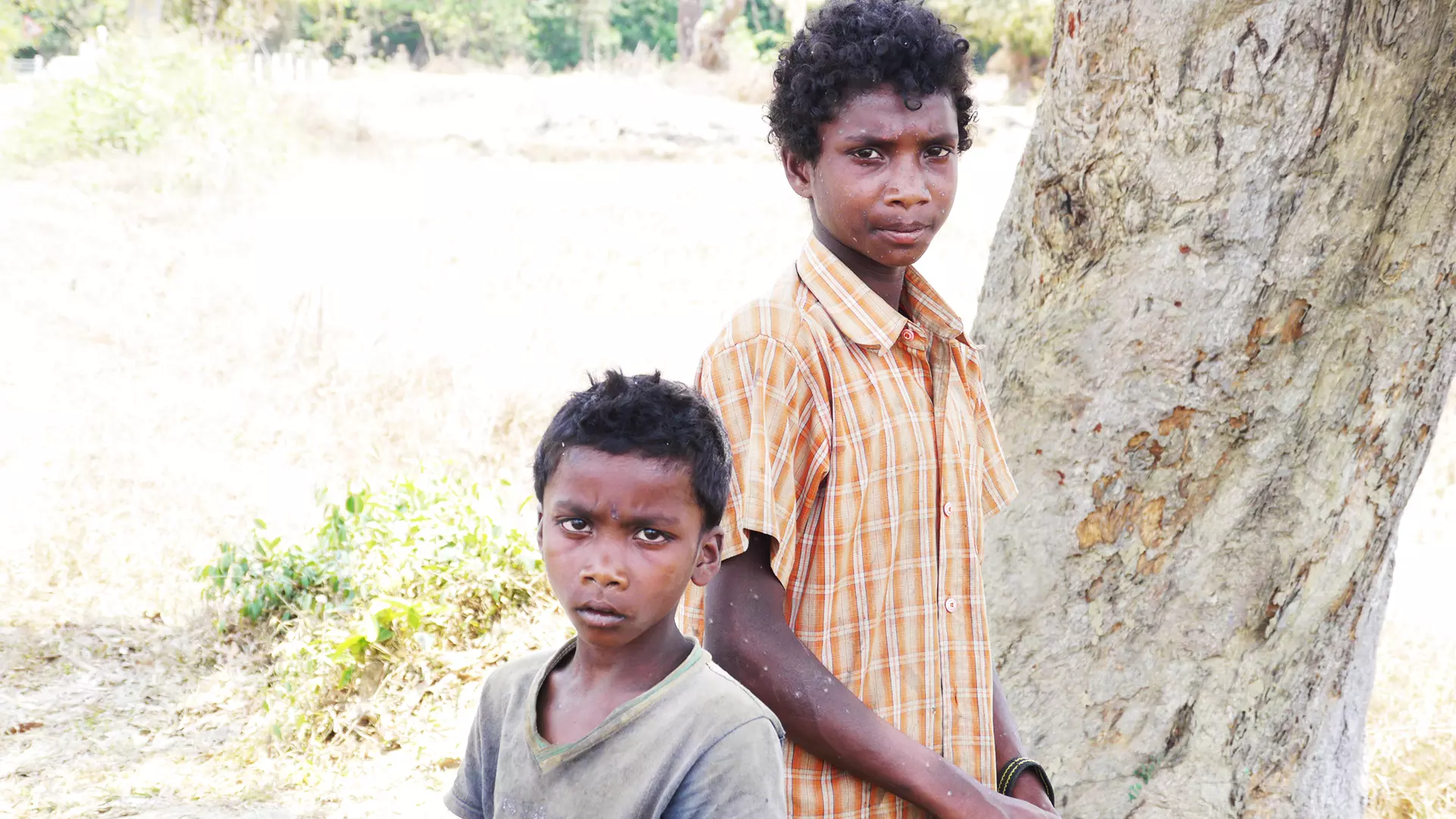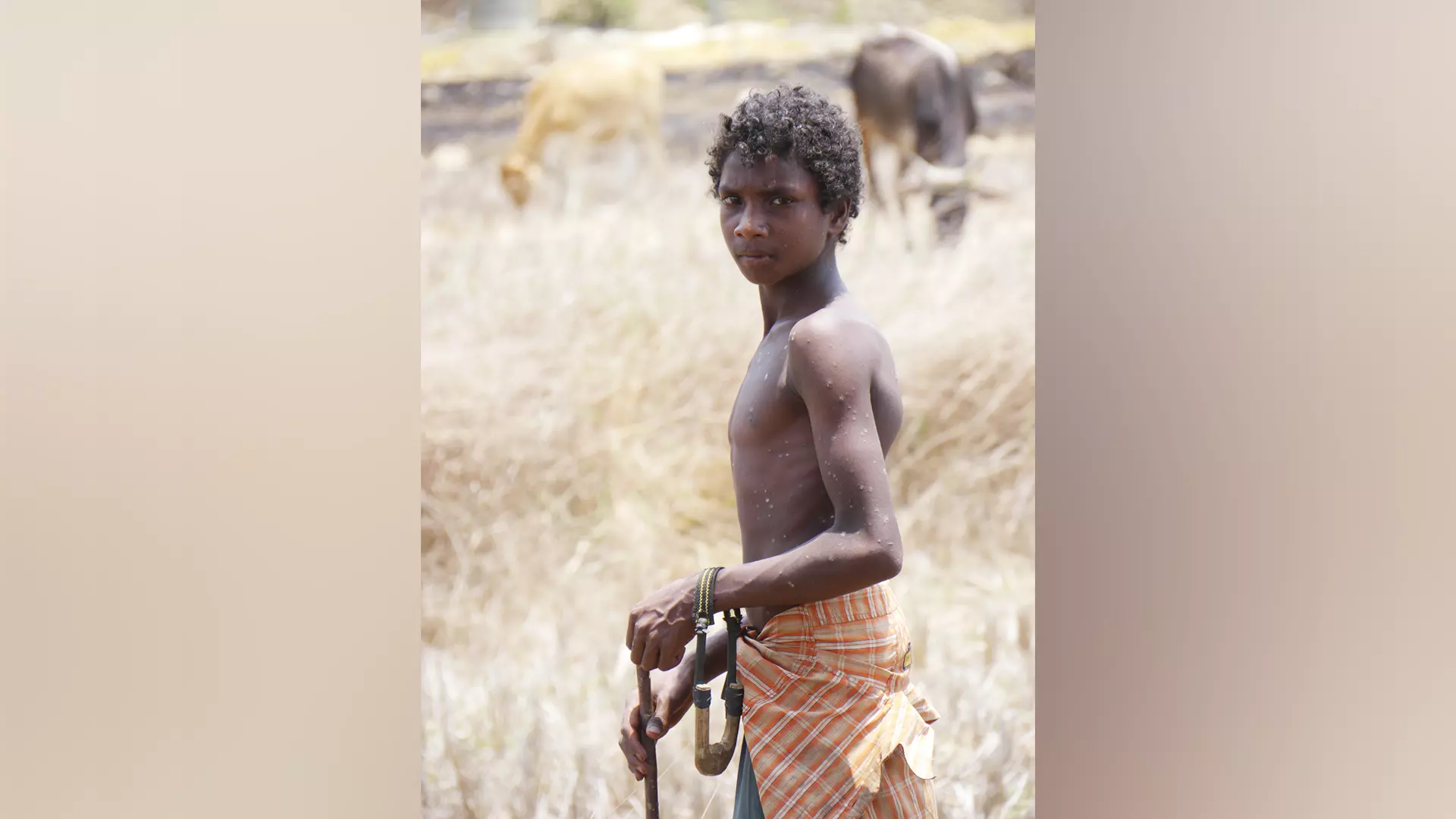
- Home
- India
- World
- Premium
- THE FEDERAL SPECIAL
- Analysis
- States
- Perspective
- Videos
- Sports
- Education
- Entertainment
- Elections
- Features
- Health
- Business
- Series
- In memoriam: Sheikh Mujibur Rahman
- Bishnoi's Men
- NEET TANGLE
- Economy Series
- Earth Day
- Kashmir’s Frozen Turbulence
- India@75
- The legend of Ramjanmabhoomi
- Liberalisation@30
- How to tame a dragon
- Celebrating biodiversity
- Farm Matters
- 50 days of solitude
- Bringing Migrants Home
- Budget 2020
- Jharkhand Votes
- The Federal Investigates
- The Federal Impact
- Vanishing Sand
- Gandhi @ 150
- Andhra Today
- Field report
- Operation Gulmarg
- Pandemic @1 Mn in India
- The Federal Year-End
- The Zero Year
- Science
- Brand studio
- Newsletter
- Elections 2024
- Events
Karnataka caste survey: 53 castes facing extinction hope to be saved
With elections to the 18th Lok Sabha less than six months away, caste has emerged as a potent weapon to ensure victory. The first salvo in the caste war was fired in Bihar when the Nitish Kumar-led coalition government made public the findings of the caste survey in the state. With the Congress jumping in the fray as a supporter of caste surveys and allocation of resources based on the...
With elections to the 18th Lok Sabha less than six months away, caste has emerged as a potent weapon to ensure victory. The first salvo in the caste war was fired in Bihar when the Nitish Kumar-led coalition government made public the findings of the caste survey in the state. With the Congress jumping in the fray as a supporter of caste surveys and allocation of resources based on the findings of the survey — riding on the slogan “jitni aabadi utna haq” (quota proportionate to strength in population) — the pressure on Congress-ruled states to walk the talk has increased.
In Rajasthan, incumbent chief minister Ashok Gehlot announced that if the party comes back to power, he will go in for a caste survey on the lines of Bihar. In Karnataka, where a survey has already been carried out, chief minister Siddaramaiah has said that he would take a call on releasing the survey’s data after receiving a panel report in November.
While caste compositions, just like in Bihar, are more or less likely to be on expected lines, the survey is being seen as critical for the fate of 53 castes that are reportedly on the verge of extinction in the state. The H Kantharaj Commission studied these castes and their future is said to be sealed in the report submitted by the panel which was constituted by the previous Siddaramaiah government in 2017.
These ‘invisible’ communities are waiting for the Congress government in Karnataka to make the finding of the Commission public so that their progress can get the required attention.
While the report of the Kantharaj Commission is awaited, their plight is no secret.

Children of the Iruliga Scheduled Tribe in Ramadevara Betta on Bengaluru-Mysuru road. Iruliga are among the endangered castes in Karnataka.
Reports of Nagamohan Das Commission, and Justice Subhash Adi panel unveiled the state of these 53 ‘invisible’ communities. Both the panels cautioned that failure on part of the system to initiate a course correction will result in either these communities becoming invisible or getting ‘wiped’ out in the days to come.
Nagamohan Das Commission
The panel was constituted by the Janata Dal (Secular) and Congress coalition government in 2019, to look into the issue of increasing the reservation for the Scheduled Castes (SC) communities from the existing 15 per cent to 17 per cent and for the Scheduled Tribes (ST) community from 3 per cent to 7 per cent.
After the collapse of the coalition government, the incumbent BJP government allowed the Commission to continue its work. The Commission which submitted its report in July 2020 addressed all issues pertaining to internal reservation, creamy layer, reservation in promotion and that in the private sector. The Commission also studied a few SC and ST communities that are facing the threat of extinction, including Talavara, Parivara and Siddi and other marginalised groups.
Interestingly, in 2022, Congress leader Rahul Gandhi had asked the Karnataka BJP government to implement the 227-page Justice Nagamohan Das Commission report to increase reservation for SCs and STs in the state.
Subhash Adi Commission
Following the report of Nagamohan Das Commission, the previous BJP government constituted a committee headed by former Karnataka High Court Justice Subhash B Adi to examine reservation demands made by various communities including the Panchamasali Lingayats, Vokkaligas and Kurubas. The Adi Committee submitted its report in October 2022. This Committee reached the conclusion that as many as 74 castes are on the verge of extinction.
Justice Adi Committee, which was tasked with examining the modalities of implementing Justice Nagamohan Das Commission’s recommendation on hiking SC/ST reservations, observed that as many as 53 marginalised Scheduled Castes are living in highly deplorable conditions.
“These communities are extremely small in number and most deprived classes. Even the names of these castes have remained invisible and they are depending only on traditional occupations and professions,” the report said. “...most of these small castes have not gained any place in the mainstream of national life, they either have become invisible or at the verge of extinction (sic).”
“The level of educational condition of communities such as Devdasis, Safai Karmacharis is highly deplorable. These communities have not got the benefits of reservation in government jobs or higher education, though reservation has existed since independence,” the report said.
“About 50 per cent of the slum dwellers are SC/ST but they are not getting any benefits from even government programs or reservations. The living standard of this community in various slums of cities and towns in the state is highly pathetic,” the report stated.
***
According to ethnographer and anthropologist Goutham Avarthi, castes and people are custodians of some of the most biologically diverse territories and they are also responsible for a great deal of cultural diversity. Avarthi says that their traditional knowledge has been and continues to be an invaluable resource that benefits for the developing society. “Yet these communities continue to suffer indiscrimination, marginalisation and extreme poverty. Some are being dispossessed of their traditional lands, as their livelihood is being undermined. Meanwhile, their belief systems, culture, language, and ways of life continue to be threatened, sometimes by extinction,” Avarthi told The Federal.
Of the 53, the total population of 47 communities is less than one lakh, according to the Nagamohan Das Commission.
Meanwhile, the findings of a survey conducted by the Centre for the Study of Social Exclusion and Inclusive Policy (CSSEIP) of National Law School of Indian University in 2019, are in sync with the findings of the Nagamohan Das Commission and Justice Adi Committee. According to the CSSEIP report, over 74% under the ST category are not visible, as their population has now dwindled to 10,000 and literacy in these communities is just 30%. Of the 50 communities that come under ST category, the population of only three communities has crossed 1 lakh and the population of the rest 47 casts falls below one lakh.
“The total population of these nomadic communities is about 9,81,118 (including 6,63,411 from Scheduled Castes and 3,17,707 from Scheduled Tribes,” says CSSEIP report. There are some communities, whose population is above two lakhs. For instance, while the population of Koragas is above 2 lakh, the population of Budga Jangama is about one lakh.
On the other hand, the numbers are too low for other communities. The number of Dakkala or Dakkaligaru — traditionally beggars who sing folk songs — is dwindling by the day and currently its membership stands at below 1,000. The population of Pambada, who are musicians at religious functions, is estimated to be 614, whereas Adiyas, who are agricultural labourers, are just 811.
“So, some communities are more disadvantaged among the disadvantaged larger whole,” says the report.
The report also states that while the population of 10 major communities in Scheduled Castes stands at 93.44, the rest of the nearly 90 communities form only a meagre 6.56%. It is significant that the literacy level of these communities is as low as 3%. “These deprived classes, according to the reports, have not seen the fruits of reservation till today, and only few castes of the 101 SC communities are grabbing most of the benefits,” says Avarthi.
Underlining the living condition of the most backward communities of these SC and ST castes, the report notes that, the living condition of these communities in urban areas is far from satisfactory.
Both Nagamohan Das and Justice Adi committee reports concluded that these 53 castes are on the verge of extinction and the plight of the people belonging to these communities is concerning. Despite all the talk of welfare schemes, these communities have not been able to avail any government benefits.
Since they depend only on traditional occupations and professions, rapid urbanisation is a threat to their existence.
The stigma
The reports regret that even after the Human Rights Commission (HRC) recommended amending the Habitual Offenders Act of 1952, none of the states have taken cognisance of the propositions of HRC and pushed the report under the carpet.
Following the 1857 mutiny, 237 castes and tribes were given the criminal-by-birth tag under the ambit of the Criminal Tribes Act, 1931. Under this act, certain ethnic or social communities in India were defined as “addicted to the systematic commission of non-bailable offences” such as thefts. These communities were registered by the government.
After Independence, the Indian government replaced this Act with the Habitual Offenders Act, 1952. Instead of helping improve their lives, the new Act only re-stigmatised the marginalised tribes. Because of the stigma the act has brought upon these communities, they continue to be pushed further into oblivion and forced to engage in begging, hunting and collecting forest produce for sustenance.
The Karnataka State Backward Classes Commission chaired by Dr Dwarakanath Chokka had recommended a survey of over 120-plus SC and ST communities which are on verge of extinction. “However, with the Congress government coming to power in 2013, they constituted the H Kantharaj Commission to conduct caste survey. Though the Kantharaj Commission conducted a survey and drafted the report, the same could not be submitted to the government. I strongly believe that the Kantharaj Commission report broadly reveals the condition and plight of these nomadic SC and ST communities and recommended relief measures,” Dwarakanath told The Federal.

The benefits of government schemes do not reach many caste groups in Karnataka.
The idea behind caste surveys is not just to launch a head count but also draft targeted policies depending on the needs of the communities since the survey also enumerates their social, economic and educational statuses.
Justice Nagamohan Das Commission recommended that the government must chalk out programmes to protect and preserve distinct cultures, and native knowledge and promote the professions being practised by communities that are at the bottom of the caste pyramid and make them self-reliant. It is important to offer priority to educating these depressed and oppressed communities and help them join the mainstream of society.

